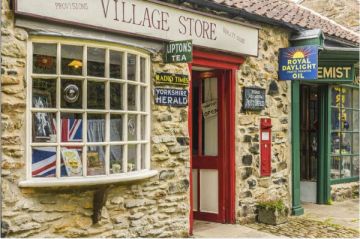Although the Queen Mother is sadly no longer with us, this information is preserved as it may be of interest to readers.
Quick Facts
- Birth Date: 4 August 1900
- Death Date: 30 March 2002
- Spouse: King George VI
- Parents: Claude Bowes-Lyon and Cecilia Cavendish-Bentinck
- Children: Elizabeth II and Princess Margaret, Countess of Snowdon
“Icon of our century”; “The nation’s favourite grandmother”; “The richest jewel in the Royal Family’s crown” – these are just some of the tributes that have, through time, been bestowed upon the Queen Mother. Entering her hundredth year, she is most certainly the longest-living British Royal in memory, and bears testament to some of the most significant developments and historical moments of our century. When she was born, the British Army was fighting its last great imperial war in South Africa, aeroplanes had not flown and gas lamps were yet to be replaced by electricity.
Born on August 4, 1900, Elizabeth Angela Marguerite Bowes-Lyon began life as a commoner. She was the ninth of 10 children born to Claude Bowes-Lyon and Cecilia Cavendish-Bentinck, a vicar’s daughter and a descendant of the Dukes of Portland. Four years after her birth, her parents became Lord and Lady Strathmore. They remained somewhat impoverished for much of their lives.
Although the Queen Mother is one of the most admired women of our times, her birth is surrounded by mystery. Her father, perhaps out of complacency at the arrival of his ninth child, or out of sheer forgetfulness, failed to register her birth for six weeks. To this day, it remains unclear as to where she was born. Although her birth certificate suggests it was the family home, St Paul’s Walden Bury, in Hertfordshire, other accounts would have us believe she was born in London.
From an early age, Elizabeth and her younger brother David – referred to affectionately by their mother as the “two Benjamins” – exhibited a great sense of fun and mischief, a quality that she is still known to possess in abundance. On one occasion, after a frantic search around the grounds of St Paul’s, the pair were discovered in the “flea house” sharing a cigarette. The family spent much of its time at Glamis Castle, in Scotland, which has been a royal residence since 1372. Elizabeth and David would amuse themselves thereby pouring “boiling oil” (in fact, nothing more harmful than water) on their mother’s guests from the castle turrets, and take the grounds people hostage, tying them up until a “ransom” was paid for their release.
Educated at home by her mother and governesses, Elizabeth was fluent in French by the age of 10. At 12 – as David, much to the dismay of his beloved sister, was packed off to Eton – Elizabeth entered the Misses Birtwistle’s Academy, where she was taught a broad and traditional curriculum. She was popular with her classmates and teachers, but after only two terms, her mother withdrew her from the academy and returned her to the watchful eye of another governess.
Elizabeth’s formal education came to an abrupt end with the declaration of World War I, when she was just 14. Soon after her birthday, she returned to Glamis, which was now being used as a military hospital for wounded soldiers. With her mother and her elder sister Rosie, Elizabeth cared for soldiers, writing letters for them to their loved ones and running errands to buy their tobacco. She also enjoyed many a high-spirited game of cards with them. It was this experience which enabled the future Queen of England to relate to people of all backgrounds and social classes – a quality which continues to make her one of the most popular Royals.
But the family was not without its own pain. In 1915, Elizabeth’s elder brother Fergus was killed at the Battle of Loos. Another brother, Michael, was held prisoner for two years.
With the end of the war, Elizabeth found a new freedom. In 1919 she was introduced into Royal circles and was relentlessly pursued by numerous suitors. Among them was Prince Paul of Serbia, who, upon her subsequent engagement, wrote: “My Queen of Yugoslavia is still missing and so I cannot plan my future. When will it happen?” James Stuart, a noted philanderer and descendant of the illegitimate half-brother of Mary Queen of Scots, was also among Elizabeth’s keenest suitors. She is said to have been deeply in love with him, but she retained a healthy sense of caution. Perhaps it was his reputation, or the need for them both to marry into money that prevented her from accepting a proposal.
Ironically, it was through James Stuart that Elizabeth came to marry Prince Albert – HRH the Duke of York, the second son of King George V and Queen Mary. Even as a child Elizabeth had been friendly with the children of the King and Queen; members of the Royal Family would sometimes come and stay at Glamis. But although Elizabeth and Prince Albert, or “Bertie”, as he was known, had met when she was just five, it was through Stuart many years later that they were re-introduced.
Stuart was employed as the Prince’s equerry and could not very well dissuade his master when in 1920 he expressed an interest in the charming Elizabeth Bowes-Lyon. In any case, it was decided that with a potential Royal match on the cards, Elizabeth could not jeopardise her future by being associated with Stuart. And so it was that Lady Strathmore and Lady Moray, Stuart’s mother, conspired subtly to dispatch him to the oilfields of Oklahoma for the duration of Elizabeth’s courtship.
Despite the attentions of her Royal inamorato, Elizabeth maintained a shrewd distance. She was reluctant to enter into Royal life and to take on all the accompanying trappings, and was cautious of such a match after her father’s determination that none of his children should ever “have any post about the Court”. From an early age, Lord Strathmore had warned Elizabeth that she should avoid Royal entanglements at all costs. On such advice, and no doubt for her own personal reasons, Elizabeth twice rejected Bertie’s proposals, much to the shock of his mother, Queen Mary. Finally, on January 13, 1923, as they walked in the woods at St Paul’s Walden Bury, Elizabeth accepted his proposal of marriage.
Three months later, on April 26, the couple were married at Westminster Abbey. Unlike future Royal weddings, there was no broadcast to the nation, as Church authorities feared that “disrespectful people might hear it whilst sitting in public houses with their hats on”.
For 14 years, the couple lived happily yet quietly together. As the Duke and Duchess of York, they were rarely called upon to perform public duties. Elizabeth proved a great support to Bertie, who was a very shy and awkward man, and with a speech therapist helped him to overcome his stutter. In 1926, she gave birth to their first daughter, Princess Elizabeth, the present Queen of England. Four years later, the couple celebrated the birth of their second daughter, Princess Margaret.
But this picture of domestic happiness was not to last. In 1937, Bertie’s brother, King Edward VIII, abdicated in order to be with Wallis Simpson. Bertie, although reluctant to undertake the responsibility of public office, felt he had little choice but to succeed Edward as his natural heir. He was crowned George VI in Westminster Abbey on May 12, 1937, and the family moved into Buckingham Palace.
The Queen Mother never forgave her brother-in-law nor Mrs Simpson, and was instrumental in securing their “exile” from Britain. She had never wanted to become Queen, and George VI was never wholly suited to public office. With her by his side, he seemed to manage quite well; but on the odd occasions when she was absent, he again retreated into the shy and awkward personality he had been as a young man.
The new pressures thrust upon the couple were only exacerbated by the outbreak of World War II. Despite strong advice that the Queen and the two princesses should leave London for Canada, the Queen refused to go. “The Princesses cannot go without me. I cannot go without the King. And the King will never leave,” she said as she resolved to remain at Buckingham Palace. Instead, she learned to shoot a revolver, practising her aim in the Palace gardens.
After air raids, the King and Queen – she dressed in the finest satin and furs – would visit the scene of devastation and offer consolation to those who had lost their homes. It was only after Buckingham Palace was bombed, however, that the Queen felt she could really relate to the people of London. “I’m glad we’ve been bombed. It makes me feel I can look the East End in the face,” she famously said.
As normality slowly returned after the war, the Royal household was again struck by disaster. In 1952, at just fifty-two, the Queen Mother was widowed. Bertie, her dearest companion, died suddenly of a stroke. This was a time of great difficulty. Not only had the Queen lost her husband, but her position too. Her daughter, Princess Elizabeth, took her rightful place on the throne.
Although supportive of her daughter, the Queen Mother withdrew from the public eye. She wore black for an entire year after her husband’s death. It took the cajoling words of Prime Minister Winston Churchill to convince her that she could not exist in a permanent state of mourning like that of Queen Victoria before her. She re-entered public life, yet maintained a distance from the matters of the Court.
There is no official, formal role for the Queen Mother, but she has nonetheless played a highly significant part in representing her family and her country. As her grandchildren grew older, she was instrumental in helping “arrange” their marriages. Both Diana, to whom she later referred as “that silly creature”, and Sarah Ferguson left for their weddings from Clarence House, the Queen Mother’s London residence.
She has proved herself a lifelong confidante to Prince Charles, whom she is known to adore. Without her, it is widely thought that Charles would have been unable to cope with the many stresses with which he has been confronted over the past decade. It is even rumoured that she provided a clandestine telephone line for him from Balmoral on which he could call his mistress, Camilla Parker Bowles.
But it is her enduring sense of fun and her boundless energy for which the Queen Mother is perhaps best-loved and admired. She remains, at 99, a keen and successful horse breeder and only gave up fishing, a favourite pastime, at 80. Even her recent £4 million bank overdraft, a result of her extravagant, Edwardian lifestyle – she has five homes, a fleet of cars, and an unspecified number of staff – is largely forgiven by the nation. Her sense of contentment and a refusal to indulge regrets has carried her through the good and the bad. It is this combination, coupled with her steely reserve in times of hardship, that has conspired to produce one of our century’s greatest living and much-loved icons.

Contents copyright 1999-2001 The Royal Report
NOTE: The Royal Report is sadly no longer online.



